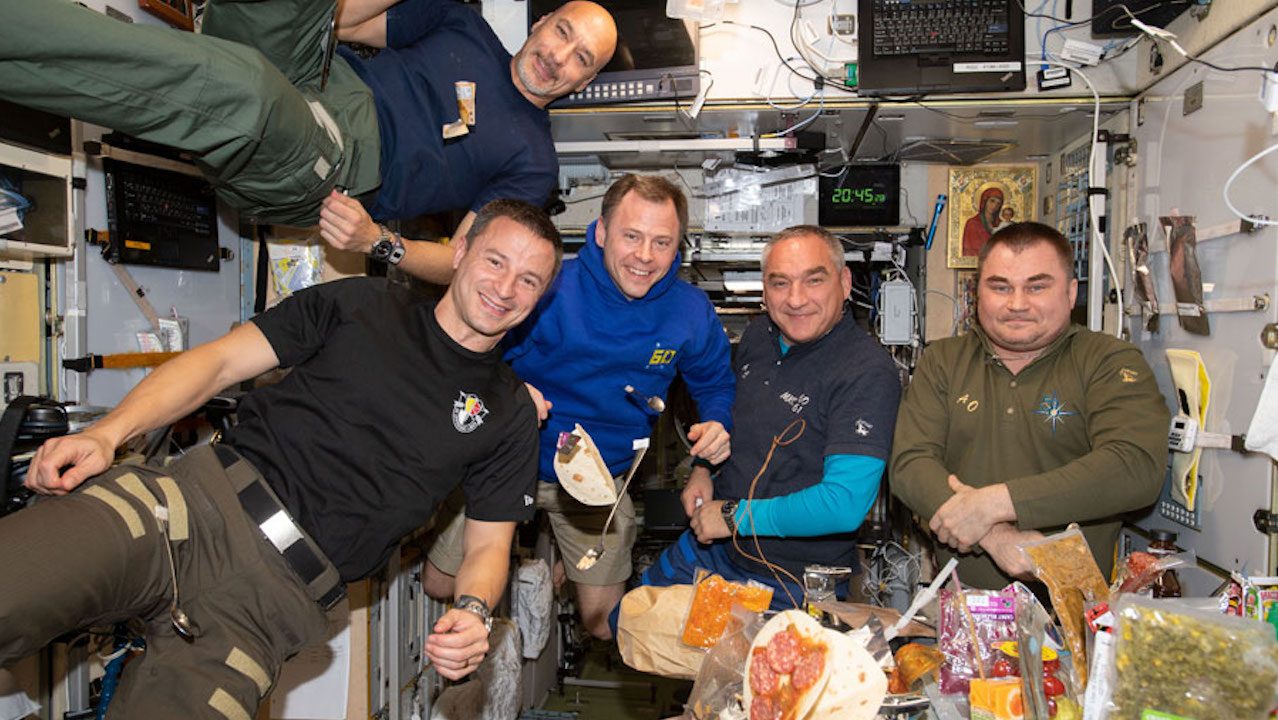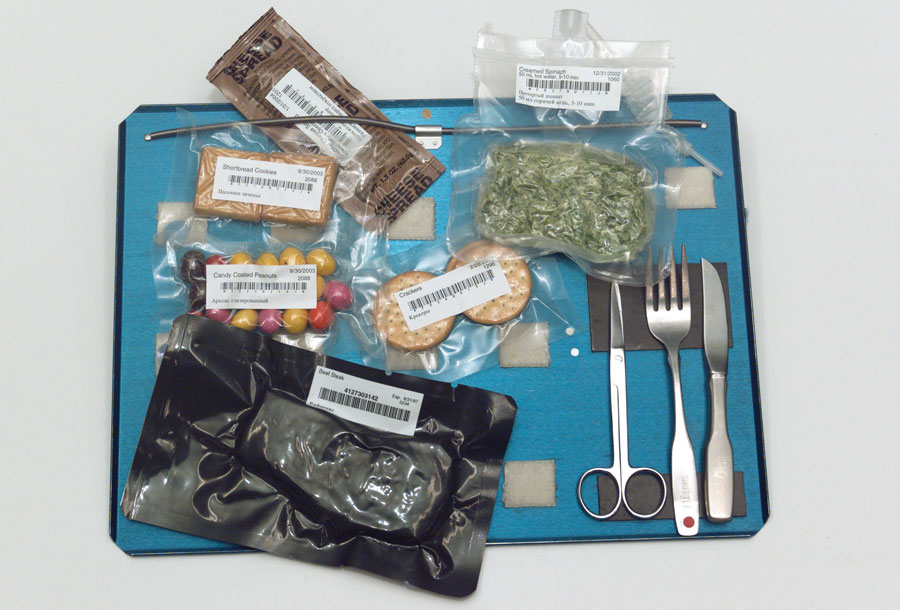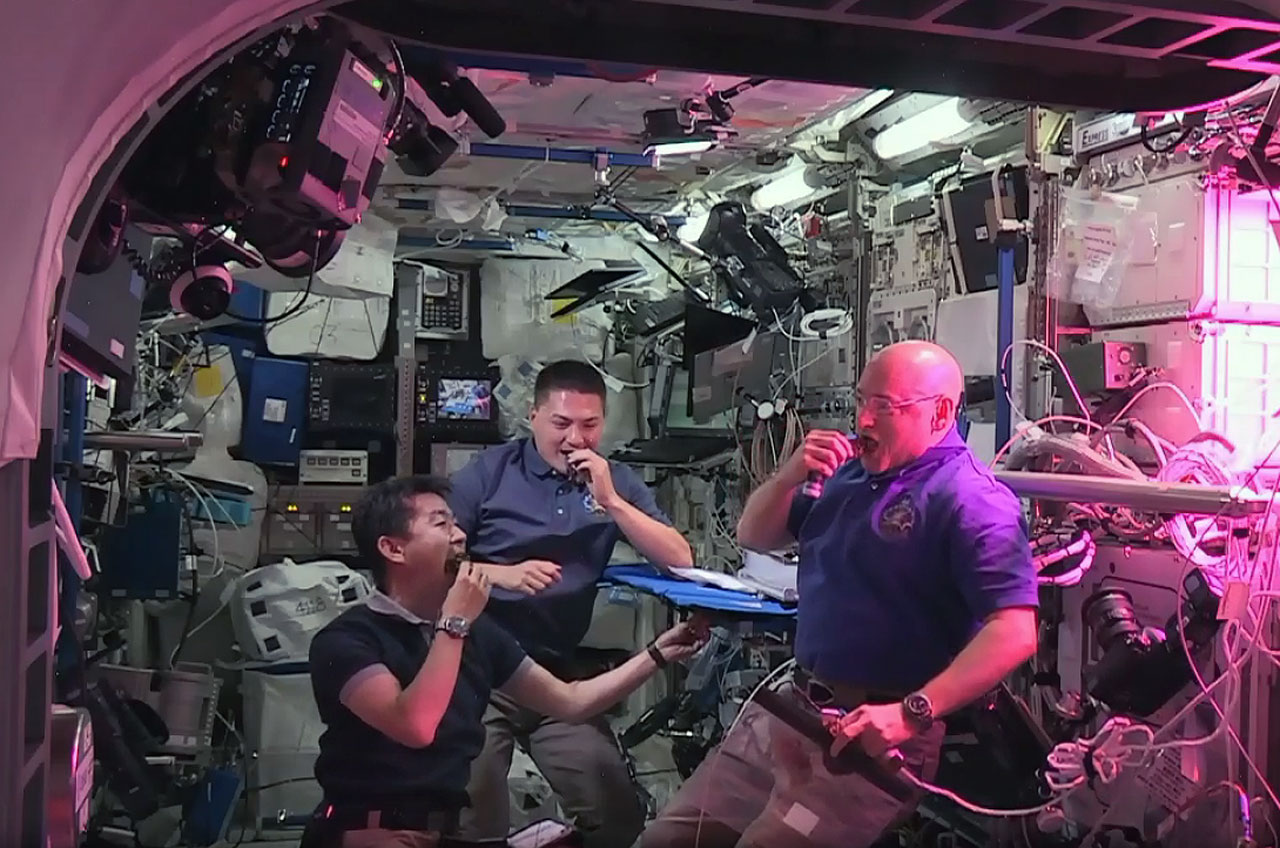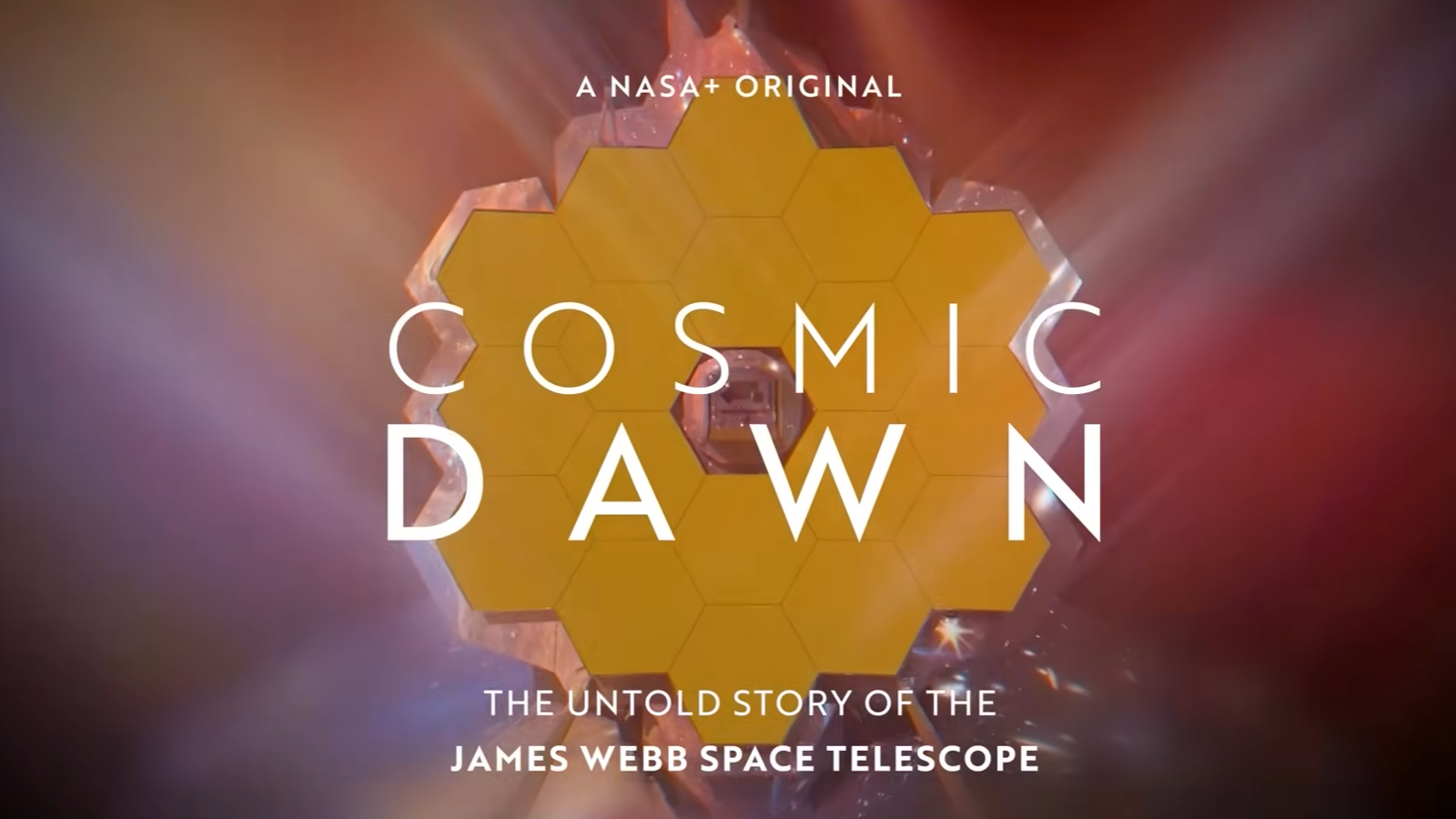What will astronauts on deep space missions eat? 'Neurogastronomy' may have the answer.
Together with the Humanity in Deep Space initiative, chef Bob Perry is considering how the crews on long space missions will experience food.

Scientists and chefs alike are working to revolutionize food technology to determine what astronauts on missions that take them away from Earth for years will eat to maintain both their physical and mental health.
Humanity is well in the midst of preparing for the next era of space exploration, which will involve long stays on the lunar surface and crewed journeys beyond the moon, potentially to the surface of Mars. NASA's Artemis program has undergone its first test flight and is expected to return humanity to the moon by 2025. After this, NASA will attempt to use the moon as a stepping stone for a crewed Mars mission.
Working with the Humanity in Deep Space initiative, University of Kentucky chef Bob Perry is cooking up a recipe for food and nutrition on longer space missions. To do this, the team is considering human flavor perception and how the brain makes use of sensory data to experience and remember food. This study, called neurological gastronomy or "neurogastronomy" allows the "human factor" to be considered when thinking about astronauts' health and nutrition.
Related: Space food: Why Mars astronauts won’t have to hold the fries (video)
Neurogastronomy examines the relationship between humans, the food they eat and where food comes from, and this can be applied to the practicalities of eating in deep space.
"One of the primary concerns is the psychological impact on astronauts during long-duration space missions," UK College of Agriculture, Food and Environment food lab coordinator and a founder of The International Society of Neurogastronomy, Bob Perry, said in a statement. "Through pioneering research and flight experiments, neurogastronomy explores various fascinating areas."

Humanity and Deep Space founding member Kris Kimel said that a journey to Mars from Earth would take around seven months each way, with astronauts expected to spend around a year on the Martian surface investigating the Red Planet. That means Mars explorers could spend between two and three years away from the home comforts of Earth.
Get the Space.com Newsletter
Breaking space news, the latest updates on rocket launches, skywatching events and more!
"Understanding the relationship between the brain, the gut, and effects of long-term spaceflight is crucial," UK College of Social Work graduate Kimel added. "Growing food during the journey becomes a necessity."
International Space Station (ISS) crew members have already experimented with growing lettuce and other crops, but the challenge lies in scaling up production to sustain a crew of several individuals for stays in space longer than a few months.

Another critical aspect of astronaut food research is understanding how the microgravity environment of space impacts the digestive process and the communities of microorganisms that live in the stomach — the microbiome of the gut. Examining gut health through the lens of neurogastronomy could help develop specially tailored diets for astronauts that optimize the number of nutrients they absorb while in deep space.
Preserving the "joy of food" far from Earth
Another aspect of the deep-space experience that the team aims to understand is how microgravity affects the senses of taste and smell. This could help better formulate food that ensures that crews don't lose the enjoyment of food while far away from Earth.
Additionally, exploring new preservation and fermentation approaches could not only ensure food supplies last for the duration of long space missions but could also mean that there is variety in the diets of astronauts. This diversity of flavors and food textures could be important to the psychological health of astronauts by limiting so-called "menu fatigue."
"The isolation and confinement experienced in deep space can profoundly affect human psychology. If you go back throughout history, you find a table where people gather to eat food in every single society," Perry said. "Zero gravity cooking tools and applications become essential instruments for spacefarers, enabling them to navigate the challenges and prepare meals in a microgravity environment. Astronauts must also connect through food even in these most extraordinary circumstances."
Though it is primarily focused on deep space, the work undertaken by Perry and the Humanity and Deep Space initiative may also have implications closer to home, back here on Terra Firma.
That's because the knowledge and technology arrived at by Perry and the team could help lead to a sustainable closed-loop food system in space that could then be applied here on Earth. Optimizing the use of resources for deep space missions could also help improve food sustainability and reduce food waste for humans on our planet.
Join our Space Forums to keep talking space on the latest missions, night sky and more! And if you have a news tip, correction or comment, let us know at: community@space.com.

Robert Lea is a science journalist in the U.K. whose articles have been published in Physics World, New Scientist, Astronomy Magazine, All About Space, Newsweek and ZME Science. He also writes about science communication for Elsevier and the European Journal of Physics. Rob holds a bachelor of science degree in physics and astronomy from the U.K.’s Open University. Follow him on Twitter @sciencef1rst.
-
Unclear Engineer With astronauts already spending as much as a year in low Earth orbit, I would think that the menu selection and micro-gravity preparation aspects would already be studied. But, those foods do not need to be grown on the ISS, so maybe this is aimed more at how to deal with the need to make edible matter while in space, perhaps by recycling wastes to water and food?Reply
From the psychological standpoint, I know that variety is important. Just in my own backpacking experience, I found the mixing peanuts, raisins and M&Ms to make GORP resulted in me getting very tired of the flavor of that mixture in about 3 days. So, when going out for a couple of weeks, I did not mix these 3 things, but ate them separately. I also took separate cashews, almonds, dried apricots and a variety of jerky flavors. Even when I got back, I still liked to eat the individual items. Extra GORP I just threw away, even after short trips.
So, for a 3 year trip to Mars, I suspect they are going to need a really varied menu. And, making ingredients onboard to do that seems like a real challenge. -
murgatroyd A greenhouse pre-positioned on Mars to greet the first humans would seem to be a must. That is, if we ever manage to land a crew there. The age of exploration (Columbus, Magellan, etc.) does not provide much of a guide to this undertaking. They merely extended the range of sailships by a few times the distance previously traveled.Reply
From our Moon to Mars is nearly a thousand times more. -
Phillip Huggan A brick exiting consistency is wanted. The number of biologists will be limited. Small complexity ecosystems can go without much maintenance and the animals can reflect what will survive and what can provide manufacturing stock. Spiders for some if optimally fed. Ponds are a low-G edge. Crayfish and shrimp. Water is flamable but caves support molluscs and 3d printing with granite should eventually permit clams (good for skeleton). Scorpions will survive radiation (ground in flour?). Ants are acidic. Fish swim downwards. Jellyfish are natural for space. A lot of toxic creatures are there you wouldn't want in a food chain in space but have medicinal properties so we might as well eat them before they kill too many other animals. Space cotton might lead to edible oil or feed oil. I imagine edible barnacles are free in a few 1000 yrs with a big aquifer. 3d printing food waxes is there we need to learn which bodyshop products are longevity.Reply -
billslugg It's hard to find decent scorpion flour these days. Spider flour is a poor substitute, even when the pH is adjusted with acid ants.Reply -
Phillip Huggan I only had time to make noodles in Jr. High so would appreciate the product. A teeny slaughterhouse for insects would lead to bigger creatures to a point for a choice cut. Coral reef and subsoil are two harder ecosystems. Urchins and Sea cucumber make the reefs. A pigeon or hummingbird is very unlikely to survive the shrew/vole soil pile but not infinitesimal odds. Bats are a biohazard as are for me mushrooms. One biologist can administer the cave part of an ecosystem, and it may be for their community whether to prioritize a Coral Reef or space live young births in soil and need two on site.Reply
